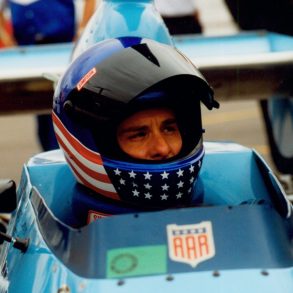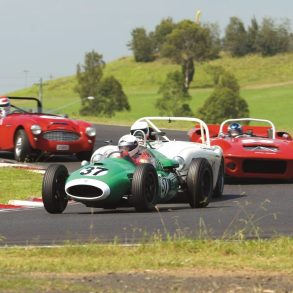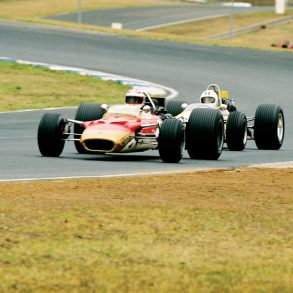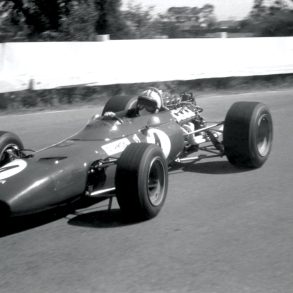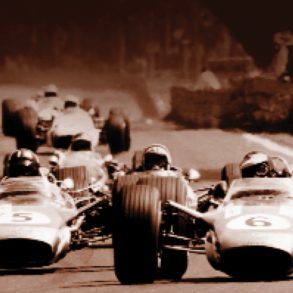For the better part of two years now, you’ve witnessed an ever-growing amount of articles, photos and event coverage originating from Australia, here on the pages of Vintage Racecar. Throughout this same period, we have been steadily building a “crack” team of writers and photographers “Down Under” to better cover what is certainly one of the most active and vibrant historic racing scenes in the world today. This month, as part of the new Tasman Revival weekend being held at Eastern Creek in December, we have devoted this entire issue to the history and personalities of the South Pacific’s 2.5-liter Tasman era. As such, this special issue is also serving as the focal point for our “official” launch in Australia, which will take place during the Tasman Revival weekend. To all our new Australian friends, reading Vintage Racecar for the very first time, I’d like to extend a very warm welcome from the rest of your brethren reading Vintage Racecar in Europe and America. Like them, we hope that Vintage Racecar will soon become your magazine of choice.
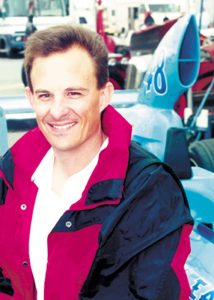
Editor
As you’ll read throughout this issue, the 2.5-liter era of the Tasman Series (’64–’69) was a magic time, not just for Australians and New Zealanders, but for the top-line international drivers, as well. Grand Prix drivers from Europe headed down to the Tasman for something of a “working holiday.” They were able to escape the cold of the European winter by racing in a series of races, held jointly in Australia and New Zealand that were competitive, but also fun-filled and relaxed. For the antipodean drivers, here was an opportunity to race against the best that the world had to offer, and for some, a very valuable chance to have their talents scouted by Formula One team principals like Colin Chapman (Lotus), Tim Parnell (BRM) and “local boy” Jack Brabham.
Talk with anyone that experienced those five years of racing south of the equator and one key ingredient will always simmer to the surface—the people. The Tasman always featured a fascinating mix of drivers and personalities, local drivers like Leo Geoghegan, Bib Stillwell, Kevin Bartlett and Frank Matich, as well as global players like Jim Clark, Graham Hill, Jochen Rindt and Pedro Rodriguez. Not to mention the famous names that had a foot in both worlds, people like Jack Brabham, Frank Gardner, Denny Hulme, Bruce McLaren and Chris Amon.
In this Tasman Revival issue we bring you an interesting cross-section of all these personalities. Though not necessarily household names outside of Australia, both Kevin Bartlett and Frank Matich significantly enhanced their successful racing careers by outstanding performances in the Tasman Series. In this month’s interview, Bartlett talks about his love affair with open-wheeled racing cars and how his days racing in the 2.5-liter Tasman are among the fondest of his long career. Likewise, in this month’s “Legends Speak,” Aussie racer and car constructor Frank Matich looks back at some of the technical aspects of the Tasman and why it played such a special role in his career.
From here we move to some of the international drivers that helped make the Tasman so special. In “Fast Lines,” Pete Lyons assesses the many contributions that antipodean drivers like Brabham, Hulme and McLaren have made on international motorsport, while Robert Newman’s “Heroes” looks back at the life of one of the Tasman’s winningest drivers, Jim Clark. Finally, Australian champion Leo Geohegan provides his thoughts on the greatest racecar of all time, and as you might have guessed, it was a Tasman car.
Of course, the cars of the Tasman Series were very special, so we went in search of one of the rarest cars to turn a wheel at tracks like Warwick Farm and Teretonga. For this month’s “Racecar Profile,” Ed McDonough gets behind the wheel of the 1968 BRM 126 that Bruce McLaren drove to a spectacular victory at Teretonga, over Jim Clark in the mighty Lotus 49. Finally, no issue covering the Tasman Series would be complete without a thorough history of the series. For this, our South Pacific Editor Patrick Quinn has pulled together a history of the 2.5-liter Tasman that encompasses not just the facts of each race, but also the views and impressions of many of the players who were there at the time.
As evidenced by the strong showing of interest and support—from around the world—for the HSRCA’s Tasman Revival event—the 2.5-liter Tasman era continues to be remembered with wistful eyes and fond affections. Undoubtedly, some of these strong emotions are likely due to the series’ powerful combination of close racing mixed with a carefree, pleasant atmosphere. Whatever the reasons, sit back, pop open an icy cold Fosters and enjoy our nostalgic look back at the ’60s Tasman Championship.




